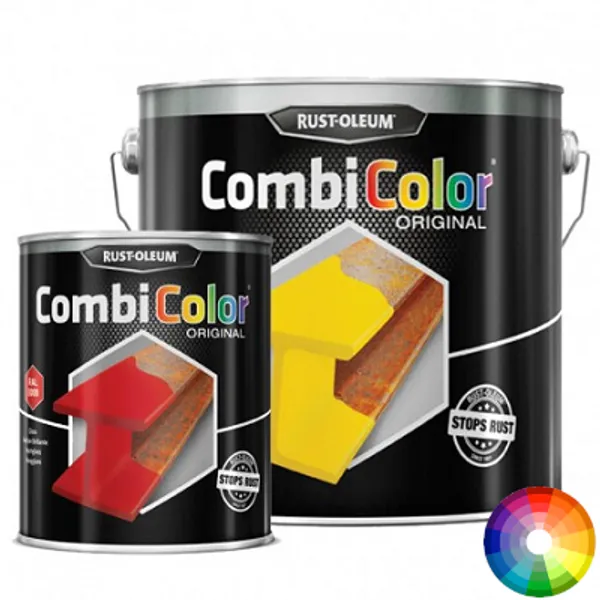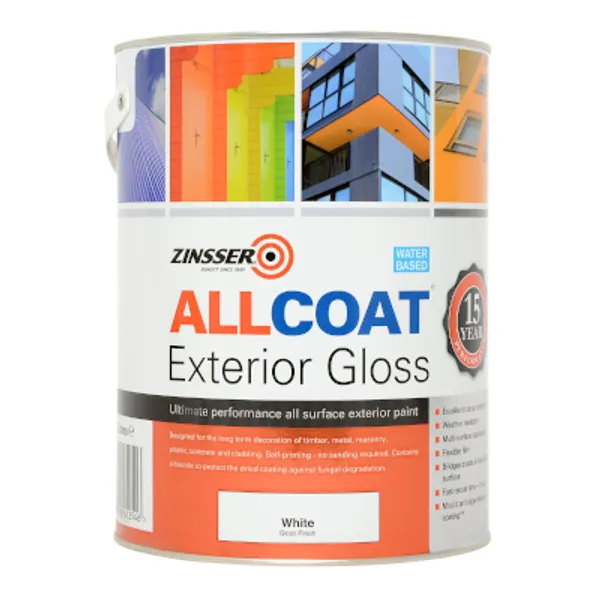Painting Radiators - The Ultimate Guide
We all want our homes to stand out, especially as modern decor has thrown out the rules of what you can and can't do when decorating your home. Today, you can achieve any look you want. Whether you are looking to refresh tired looking radiators or want a full colour change, our experts have put together this guide to painting radiators to help you get started.
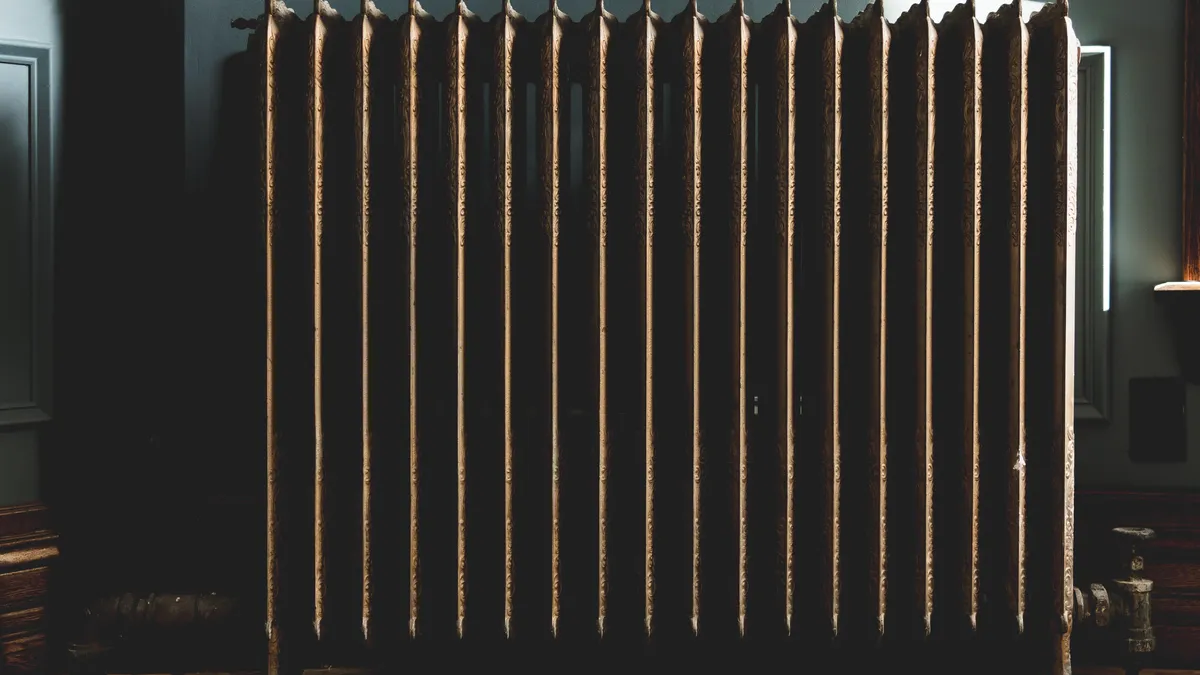
Can You Paint Radiators?
We are consistently asked by homeowners about what surfaces they can and can't paint. The reality is, with today's technology, there are very little surfaces around the home that you can't paint. The answer is yes, you can paint radiators, but not with any paint. You must use a paint that has the necessary adhesion on metal surfaces.
Are you deciding whether painting radiators is a good idea? Here are the main things to consider.
Advantages
- You can achieve any look you want, either making your radiators stand out or blend them into the wall
- Painting radiators is a cost-effective way to update them without having to buy new ones
- It is a small and easy DIY job that anyone can do
Disadvantages
- As with any paint, there is always the risk of it failing if not done correctly
- You cannot use any paint, you must use a suitable paint for metal
Overall, painting a radiator can be a fantastic way to finish off a room perfectly, if you follow expert advice to ensure you prepare them properly.
The Best Radiator Paint
If you have decided to paint a radiator, the next step is to find the best paint for painting radiators.
When it comes to paint, it is important to first consider the options when it comes to finish. A large number of paints, from interior wall & ceiling paint to metal paint, come in a range of finishes. These finishes range in terms of sheen, otherwise known as their level of reflectivity. The more sheen a paint has, the more light it reflects and the more durable it is.
- Matt - the 'flattest' finish of paint that is the most popular finish for interior walls & ceilings. It is also a popular finish when used in specialist paints designed for exterior or interior use, such as metal paint & masonry paint.
- Eggshell - eggshell is perfect if you want a slightly higher sheen than matt and require the added durability that comes with more sheen. It is used on walls, plus on wood & metal.
- Satin - a mid-sheen finish that is designed for use on woodwork & metal.
- Silk - a mid-sheen finish that is designed used on interior walls & ceilings.
- Soft Sheen - a mid-sheen finish with a softer finish than silk, for use on interior walls & ceilings.
- Gloss - the highest level of sheen, most commonly used on woodwork & metal.
While soft sheen and silk paints are finishes designed primarily for interior walls, matt, eggshell, satin & gloss are all finishes that you will commonly find used on radiators.
Aside from paint finish, the other thing you need to consider is the type of paint you use. Paint generally comes in two broad forms; oil-based paint & water-based paint.
Water-Based Paint Advantages
- Dry quicker than oil-based paints
- Brushes and rollers can be cleaned using water
- Low odour
- Do not yellow
- Lower VOC's
Water-Based Paint Disadvantages
- Can be prone to chipping
- Take as long as two weeks to fully harden
- Lower sheen levels
- The finish achieved short-term can be slightly less impressive
Oil-Based Paint Advantages
- A higher level of sheen can be achieved
- Can be easier to work with and get a smooth finish
- Traditionally offer higher durability when compared to water-based paint
- Harden quickly
Oil-Based Paint Disadvantages
- Can have an unpleasant odour
- Brushes and rollers must be cleaned using turps or white spirit
- High levels of VOC's
- They can yellow over time, which can be a problem when painting a radiator in a white shade
Generally, it is up to you whether you use an oil-based paint or a water-based paint. Although a water-based paint is easier to use as a DIY'er and today can rival the technology that is in oil-based paints, oil-based paints can also be a great option.
Before we discuss the best paints to use, it is important to point out that all the paints in this guide are examples of trade paint. The major paint manufacturers generally develop two versions of their paints, a retail paint and a trade paint. Trade paints are higher quality, have more durability and have a better coverage, as a professional decorator must achieve a high-quality finish every time. A retail paint on the other hand is generally cheaper as DIY'ers often opt for the cheapest paint for the job. Overall, we recommend spending slightly more up front on a trade paint that will complete your project as quickly as possible and to the highest standards. As many people say, if you buy something cheap, you will end up paying twice. Don't worry, trade paint is just as easy to buy and use as retail paint, the only difference is that it is higher quality.
The Best Oil-Based For Radiators
When it comes to an oil-based paint, we highly recommend products from the Rust-Oleum Combicolor range. In particular, the Combicolor Metal Paint, which is an extremely high performance metal paint for a range of uses, including radiators. A primer and topcoat in one for added ease of use, Combicolor has a fantastic coverage of 10.5m² per litre and can be applied to radiator due to its fantastic adhesion to metal and its heat resistance to 90°C. All this, plus sag resistance which helps to eliminate brush strokes and leave a perfectly smooth finish on metal.
Aside from its performance, it is available in satin or gloss finishes and can be mixed in thousands of colours thanks to the paint mixing service here at Painters World. This allows us to mix Rust-Oleum Combicolor Metal Paint in almost any colour, including RAL, British Standard or equivalent shades of all major manufacturers, even designer shades. We do not list all of the paints we can mix, which is why you can simply type in the name of the shade in our text box and we will mix that colour.
Overall, Combicolor is a fantastic option, especially if you are planning on painting your radiator in a colour, which will limit any yellowing that can occur in oil-based paints. If you are opting for a white shade, a water-based paint may be better suited for you.
The Best Water-Based Paint For Radiators
Water-based paint is an often preferred option for homeowners who have less experience with paint. When it comes to water-based paint for radiators, there are a number of options depending on the finish you want to achieve. These are all examples of acrylic paints that have the required durability to be applied to metal without chipping or scratching easily. There are three options of finishes, acrylic eggshell, acrylic satin or acrylic gloss.
The Best Water-Based Eggshell
If you are looking for a high performance eggshell paint to apply to a radiator, we would look no further than Macpherson Acrylic Eggshell. As with the full Macpherson range, it offers fantastic value for money, thanks to its reasonable price tag and excellent performance on a range of surfaces. As a water-based formulation it is quick-drying, is low in VOC's and does not yellow when used in white, like what can happen with many oil-based alternatives. Furthermore, it has a superb coverage of up to 16 m² per litre!
Once again it can be mixed in almost any colour you like and as the lowest sheen paint that is generally used on radiators, it leaves a modern, low-sheen finish that is perfect for a contemporary look.
The Best Water-Based Satin
The Best Water-Based Gloss Radiator Paint
Our recommendation for a water-based gloss would be Zinsser AllCoat. This is an excellent multi-surface paint that is primarily designed for exterior surfaces, however the unrivalled adhesion it offers means it is just as effective on interior surfaces like radiators.
Zinsser AllCoat gives excellent resistance against cracking, blistering and flaking. What makes Zinsser Allcoat one of the most popular paints currently in the UK, both with professional decorators and DIY'ers, is that it is extremely versatile. It is available in any colour, any surface and available in any finish, including gloss, matt & satin. It is also self-priming, removing the need to apply a primer before painting.
Overall for any easy-to-use, high quality water-based gloss, this is an ideal choice.
How To Paint Radiators
Once you know what paint you are using, it is time to get painting!
What you will need:
- Paint
- Primer (if required)
- Masking tape
- Dust sheet
- Cleaner
- Paint brush
- Paint tray or kettle
Step 1: Preparation
The single most important step of any painting project is to prepare the surface before painting, as any professional decorator will tell you. This can make or break your project, so make sure you take your time and don't skip steps.
The first step is to make sure that the radiator is clean. You may not realise but a large amount of dust and dirt finds its way onto radiators, which will prevent the paint from adhering properly if it is not removed. Use a cleaning & degreasing solution or simply warm water and washing up liquid to clean down the radiator and leave to dry.
Masking tape will ensure you get the neatest possible finish. Apply it to any edges you do not want to paint, ensuring you use a good trade masking tape such as Q1 Precision Line Masking Tape as this will prevent any paint bleed through that can occur when using a cheap masking tape.
You do not have to, but you can give the radiator a light key using sandpaper to help the paint to adhere. Using a 120-grit sandpaper will create this key, then wipe down to remove all the dust from the area.
The final stage of the preparation is to put down a dust sheet to protect the floor from any paint spillages.
Step 2: Priming
Next is the priming or undercoating stage. Some paints such as Combicolor are self-priming and therefore do not require this stage. Many paints however either require a primer, or have a dedicated undercoat that should be applied before the main coating of paint.
You can apply this coating using a roller or paint brush. Depending on the paint you are using, you will have to use the correct paint brush. Synthetic paint brushes are made from materials that will not absorb water which makes them ideal for water-based paints, while natural bristles brushes are made from animal hair that will absorb water, meaning they can only be used with oil-based paints. If you are ensure what paint roller to use, why not read out full guide to the best paint rollers?
Ensure you apply your primer or undercoat in an even but thin layer, as it is better to have a thin layer of paint that will adhere better to the surface.
Leave to dry completely before moving on to the painting stage.
Step 3: Painting
Now the important part, the painting. Start with your first coat of paint, using your paint brush or roller to go around the edges of the radiator. Once the edges have been painted, you can then paint the bulk of the surface. Using a mini-roller will ensure you get the best possible finish on the metal as brushes can be susceptible to brush marks. A mini-roller such as Wooster Jumbo-Koter Red Feather 4.5" Mini-Roller can be used with all eggshell, mid-sheen and high-sheen finishes, leaving a perfectly smooth, spray-like finish. Your first coat of paint once again should be a thin layer as this is aimed at creating a solid base for your final coat of paint.
Once you have applied you first coat of paint, leave to completely dry.
Once dry, it is time to apply a second coat. Apply the second coat slightly thicker than the first coat, but still ensure a uniformly even finish. If you are using a trade paint, the chances are it will only take two coats, but if required apply a third coat.
Leave to completely dry. Over the next few days, the paint will continue to harden, which means it is important to be careful with the radiator once it is freshly painted.
Frequently Asked Questions
Q. How much is radiator paint?
As with all paint, radiator paint can vary in terms of price. For a 2.5L tin of paint, which should be enough to paint a large radiator, it can vary from £20 to £50 for a good quality paint.
Q. Can you paint a radiator with emulsion?
Water-based eggshell is what is generally referred to as an emulsion paint, which is a paint used on interior walls & ceilings. A standard emulsion paint would simply peel or chip with minimal effort, which is why a durable eggshell emulsion is the only form of emulsion paint that offers the required durability to be applied to metal.
While other emulsion paints will adhere, they will fail in a matter of months, which is why it is not worth doing. Some people use emulsion because they want the same colour radiator as the wall. The reality is, this is unnecessary as you can get both paints mixed in the same colour!
Q. Is painting radiators safe?
Painting radiators is completely safe, do not worry. Using a water-based paint that is lower in VOC's than an oil-based paint is a step you can take to reduce any potential harm caused by painting, however there are very little problems caused by painting radiators.
Painting Radiators Ideas
The possibilities with painting radiators are endless. While a white radiator can offer a beautifully traditional look, this is not the only option! Here are a few potential avenues you can take:
1. Traditional
The traditional white radiator is one that we all recognise, with the chances being you have them in your house. Refreshing a tired looking white radiator with a fresh lick of paint can be just as impactful as painting it a different colour.
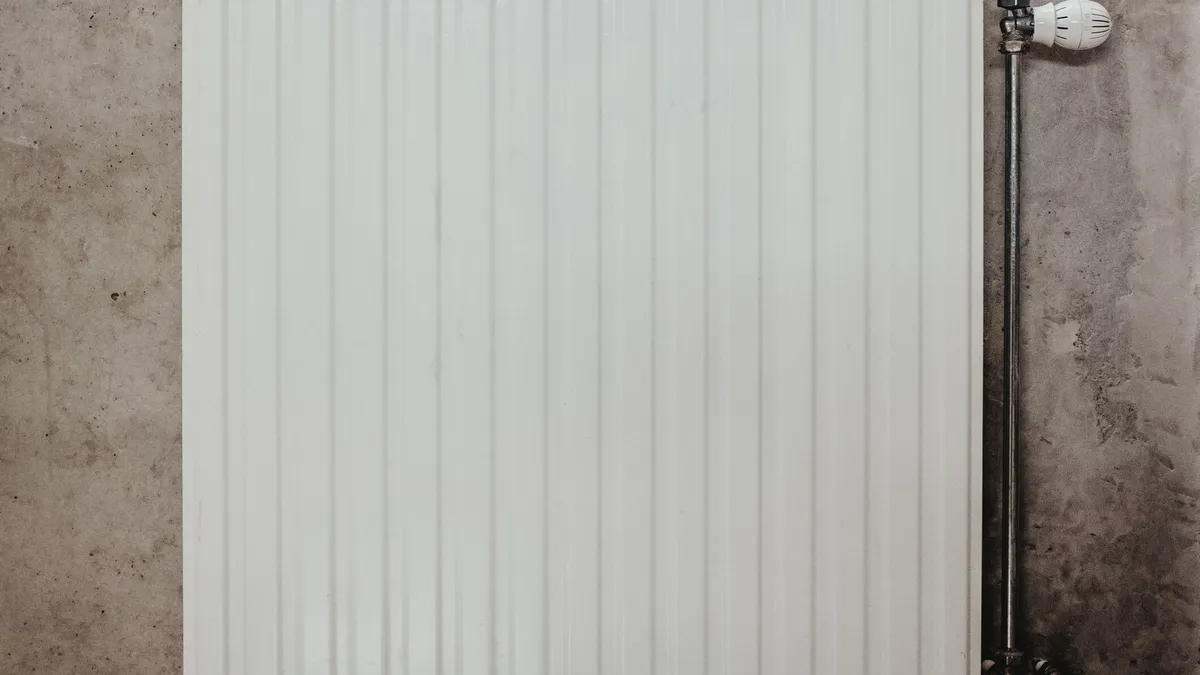
2. Grey Radiators
Grey is a colour that is often labelled boring, but it is a hugely versatile shade that is perfect for creating a contemporary look in any room. Modern grey shades such as anthracite grey are hugely popular at the moment and for good reason! Whether you want a dark impactful grey or a light grey that still maintains a subtly, there are an endless amount of options.
This example from Raichel Payne is a fantastic example of what a black grey tone can do, which would be perfect for matching with the shade of the wall (which we are going to discuss next).
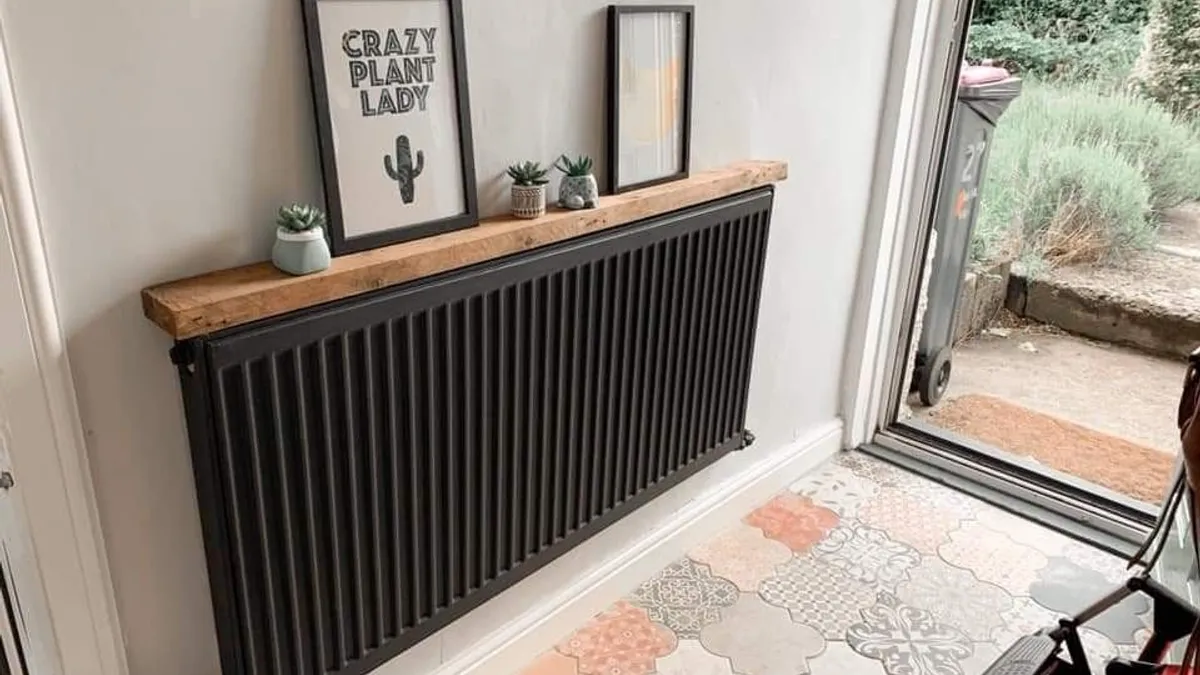
3. Match Up!
Another possible route you could take is to match the colour of your radiator to the wall. This is becoming increasingly popular at the moment as modern decor has no limits. Previously it was a no-go area if you wanted to paint radiators, coving & other parts of interior trim the same colour as the wall. Today however, it is an easy way to add an ultra-modern and stylish feel to your home.
It is not only extremely on-trend, but it is a great way to hide your radiators and to add a unique twist to your house that you don't always see. It is one of those details that when done correctly can make the world of difference, trust us!
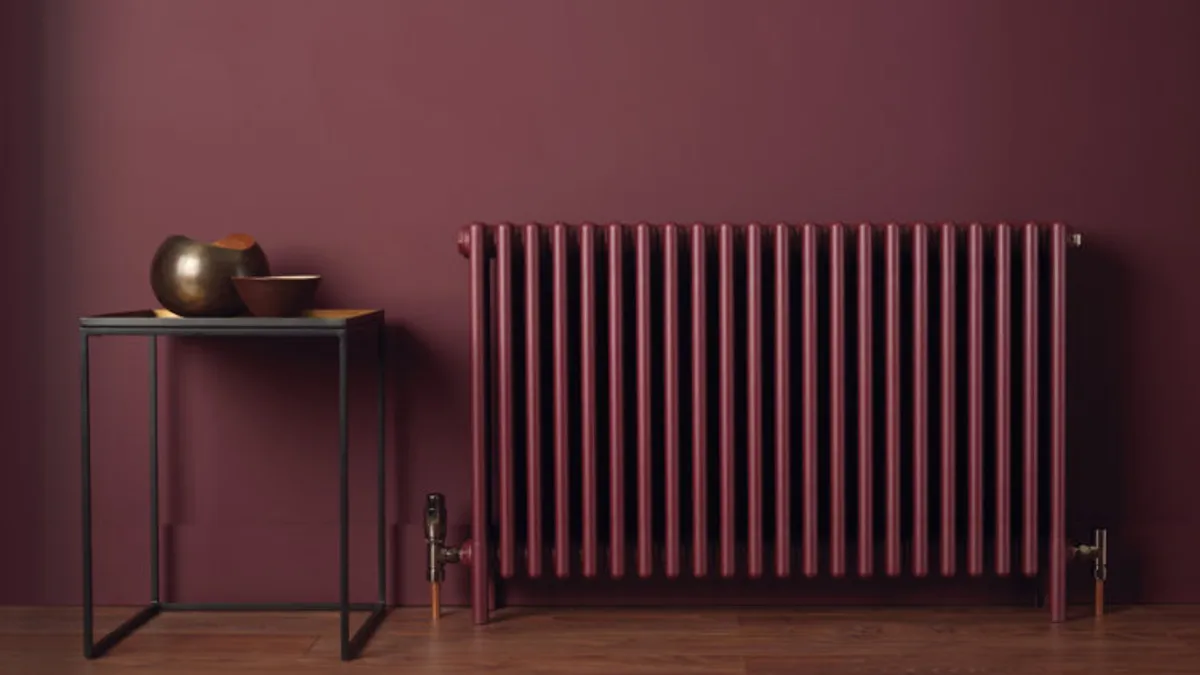
4. Colour
Why not express yourself and add some colour to your home? Orange, red, green, blue, you name it! There are thousands of colours out there that you can use to transform your radiator however you desire.
We love this example that is a perfect demonstration of how well a contrasting colour can work, especially when tied into the decor of a room. We recommend that you explore your options, get creative and don't stick to traditional conventions as there are so many exceptional looks you can achieve!
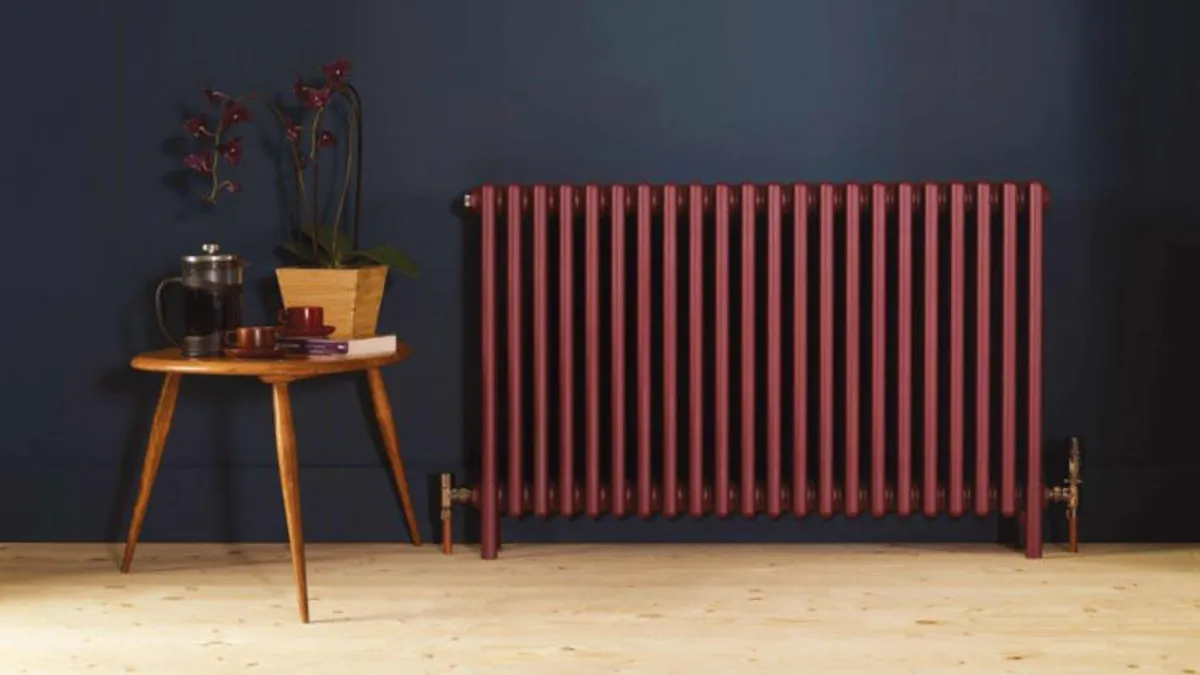
We hope this has answered any questions you may have had regarding everything to do with painting radiators. Shop our range of radiator paint, decorating tools & supplies we have in stock here at Painters World, all with FREE next working day delivery over £50.



Sign up now and be the first to know about exclusive offers, product updates, and announcements.

